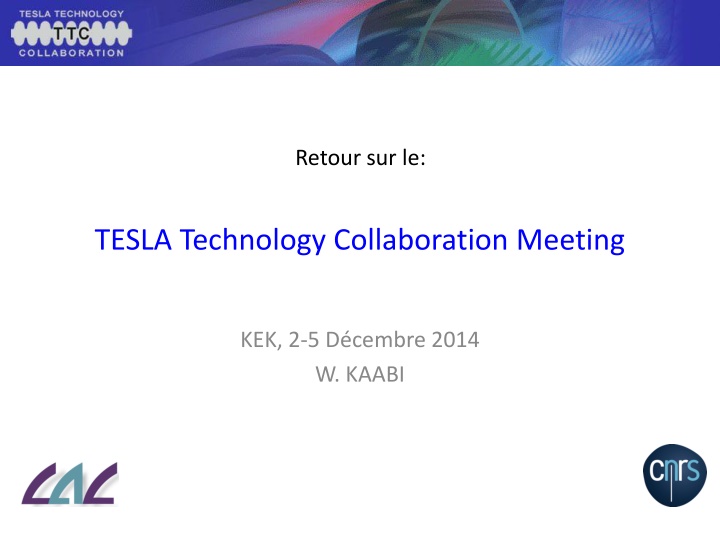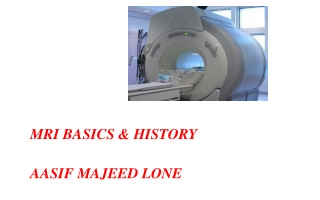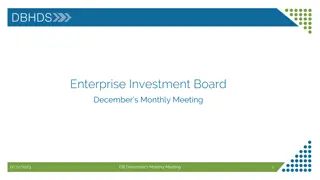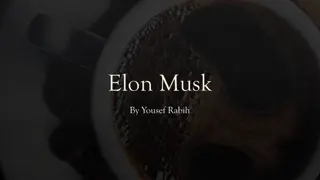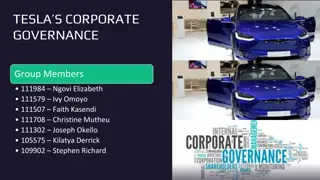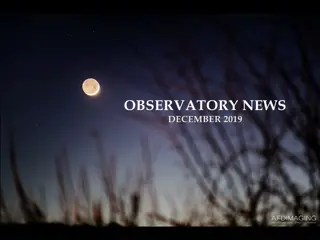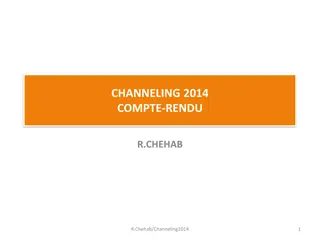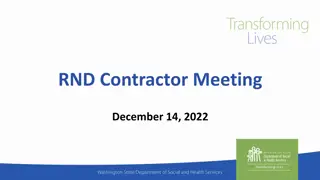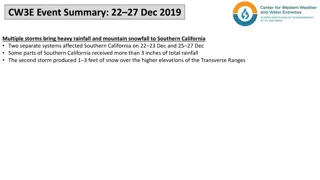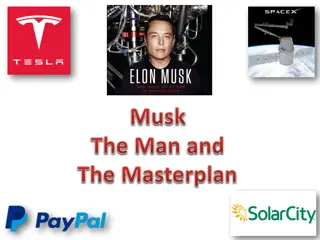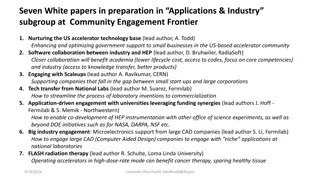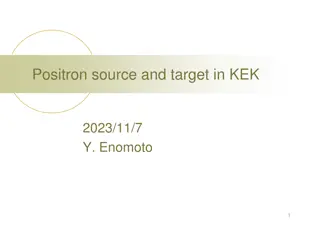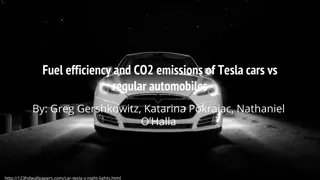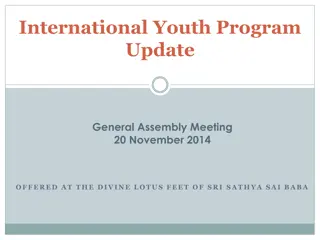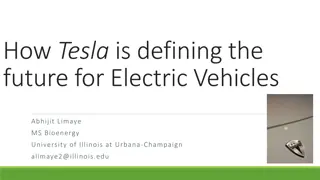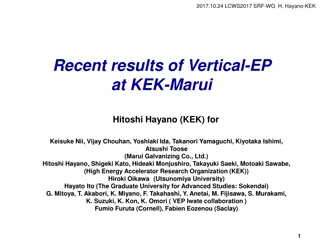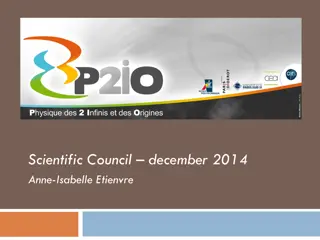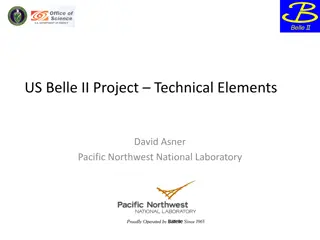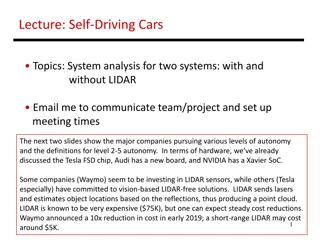TESLA Technology Collaboration Meeting at KEK December 2014
The TESLA Technology Collaboration (TTC) aims to promote R&D in RF superconducting technologies through collaborative meetings to address technical challenges and share developments. The recent meeting at KEK in December 2014 covered working groups on module tests, assembly, high Q0, cavity fabrication, low beta, and key components. Discussions on module performance evaluation, automation of testing procedures, cavity performance preservation, lab differences, standardization, and measurement precision were key highlights.
Download Presentation

Please find below an Image/Link to download the presentation.
The content on the website is provided AS IS for your information and personal use only. It may not be sold, licensed, or shared on other websites without obtaining consent from the author.If you encounter any issues during the download, it is possible that the publisher has removed the file from their server.
You are allowed to download the files provided on this website for personal or commercial use, subject to the condition that they are used lawfully. All files are the property of their respective owners.
The content on the website is provided AS IS for your information and personal use only. It may not be sold, licensed, or shared on other websites without obtaining consent from the author.
E N D
Presentation Transcript
Retour sur le: TESLA Technology Collaboration Meeting KEK, 2-5 D cembre 2014 W. KAABI
La mission du TESLA Technology Collaboration (TTC) est la promotion de la R&D des technologies associ es la RF supra et la mise en place d un cadre d changes d id es, de d veloppements et d exp riences entre protagonistes travaillant sur des projets diff rents. Le TTC organise des meetings de collaborations annuelle (biannuelle certaines ann es) o de nouveaux d veloppements sont report s, les difficult s techniques rencontr es expos es, discut es et r solues dans le meilleurs des cas. Le LAL fait partie de la collaboration gr ce notamment ces activit s sur les coupleurs de puissance pour cavit s supraconductrices. Le dernier TTC meeting a t organis au KEK (D cembre 2014), le prochain sera organis SLAC en D cembre 2015. Lien Indico: https://indico.desy.de/conferenceTimeTable.py?confId=10663#20141205
Session plnire et 6 Working Group en sessions parallles: WG 1: Module tests and Procedures WG 2: Module Assembly WG 3: High Q0 WG 4: Cavity fabrication and preparation WG 5: Low Beta and Crab cavities WG 6: Peripheral key components Intervention du LAL en session pl ni re et au WG6: Challenge for mass-production of E-XFEL input couplers
WG1: Testing Procedures XFEL module test infrastructure and procedures at DESY (M. Wiencek/DESY) JLab cryomodule testing (M. Drury/JLab - by E. Daly) ARIEL Commissioning (B. Laxdal/TRIUMF)
Questions Is it enough to evaluate the module performance? Procedures timing and time constraints? Automation how labor intensive is testing; what steps can be taken to automate it? Conclusions We have now a very good and consistent set of testing procedures; Timing can be critical each project would need an evaluation; Automation is mostly a set of software tools adapted for a specific testing task more can be done.
Questions Are we able to preserve the cavities performance? Are there big differences between the Labs? Is standardization needed; in what areas of testing? What about the measurement precision? How to define the operating gradient? Gamma radiation measurements - how can one connect the data to the dark current in the machine? How to measure the Q0 reliably? What about storing/analyzing/sharing the data? Other components: cold magnets, instrumentation, etc. Conclusions There is a cavity performance degradation between VT and module test and we must study this more closely between the Labs and projects; We should continue a global cavity/cryo-module data base effort; Measurement precision as well as standardization are both on a good level now.
WG4: cavity fabrication and preparation (materials and process) Gigi Ciovati (Jlab) presented pressure test results on cavities which showed good agreement with mechanical simulation on yielding after heat treatment. Two data was shown: FG 800deg/2h and Medium-purity ingot Nb 1400deg/9h. No significant difference in the elastic properties between them. Medium-purity ingot Nb has higher yield strength. Rogerio Ribas (CBMM) gave an overview of the production process of niobium and bulk ingot materials R&D is ongoing ,looking at defining the melting procedures to achieve reproducible RRR ingots 500 years of niobium available for production Ganapati Myneni (ISOHIM) gave an overview of the history of large grain cavity fabrication Proposes use of reactor grade material for cavity fabrication Develop specs for uniform grain proposed Rong-Li Geng (Jlab) presented results of a study aimed at identifying and controlling foreign material contamination during fabrication Contamination from machining and cleaning process was suspected After control of these procedure, less contaminants found and good EB welding achieved. Alena Prudnikava (uni Hamburg/DESY) presented results from CBP studies on remaining defects Scratches and features caused AL2O3which imbeds during the process at multiple steps Refresh of media at last step of CBP reduced defects Shearing is evident and process not optimized Shigeki Kato (KEK) presented results from a study on VEP non homogenous removal and improving steps Top Iris removal much higher due to H2bubble attack Development of Ninja cathode. High speed stirring to improve removal uniformity. Vijay Chouhan(Marui Galvanizing Co) presented the study using the Ninga cathode to improve uniformity of removal Best results (uniform removal) at 50rpm Relatively rough equator surface might be due to bubble attack Must be optimized for each cavity structure
WG4: cavity fabrication and preparation (cavity production) Carlo Pagani (INFN) presented the results from the XFEL 3.9 GHz cavity fabrication and testing results Some effort to get PED certification (10 months), causing delays Cavity performance was excellent and will now be sent to DESY for module assembly Hiroshi Hara (MHI) presented ongoing SRF activities towards cavity mass production Prepare dumbbells using of spinning and deep drawing to reduce number of parts is underway 2 Cell cavity fabricated using improved processes and results were excellent Grigori Shirkov (JINR) presented activities on the linear collider cavity and hardware production Successful development of explosion bonded SS-Ti, Nb-TI-SS joints Cavity development work, deep drawing of half cell and EBW, is ongoing Yegor Tamashevich (uni Hamburg/DESY) presented improved methods with second sound detection Very successful analysis routine developed, including 3D ray trace simulation, which matched well with thermal mapping Success will allow use of less sensors Attempt to use this method on a dressed cavity will come next Stefan Lagotzky (uni Wuppertal) presented statistical model for field emitter activation to estimate electron loading New model successfully developed Correlation with small samples underway, using measurement by DC field emission scanning microscope
WG2: Module assembly (Clean room assembly) Clean environment, airbone counter, surface counter, UV light control ; IEST-RP-CC003 garment change ; ISO certification ; Water quality control (TOC, resist, particles) HPR (design, arcing, part. counting) Specifications of clean room infrastructure (ISO4 5, utilities), tools and consumables Individual components preparation, method of the different checks: visual inspection, particle counting, acceptance thresholds QC of cavity, coupler, valve, bellows and general hardware Qualification and training of personnel Experience from industrial semi conductor plants Cofrend, mechanic skills, initial qualification, number of hours in CR, learning process On all subjects. Specification of vacuum infrastructure, vacuum equipment and vacuum procedures Spec. vac. Group , pump, filters, gas purity, location of the equipment. Leak test proc., low temp. baking in/out CR, Venting procedure (which gas, on individual component or assembly).
WG2: Module assembly (Clean room assembly) Turning flange or not, blind or threaded holes, screw materials (silver plating , CuNiSi/SS), component fabrication tolerances vs. adjustment/prealignment need, gasket type choice for best cleanliness during disassembly. Dis assembly/assembly tools and procedures: the mechanical aspects Human position with respect to components, component wiping/blowing, contamination risk with valve closure. Nitrogen flushing through the cavity. Disassembly procedure for flanges Disassembly/ assembly tools and procedures: the cleanliness aspects Beam vacuum connection inside the tunnel :procedures, equipment. In-situ RF conditioning of FPC: how to best maintain performance (1by1 or all together/ cold or warm/ pumping port location). Degradation possible causes and in situ diagnostics, in situ cures. Experience with cavity gradient degradation in cryomodule tests
Conclusion: cavities pump gas UPW filters vacuum gas purity flushing pumping HPR couplers valves arcing bellows Particles preparation
WG2: Module assembly (post clean room) Cryomodule connection XFEL plans and experience on module connection, K. Jensch (DESY) Introduction of open clean bench of class 1 for (beam line) assembly work, S. Maeda (Koken Ltd.) Magnetic shields and related issues Report on CEBAF experience with magnetic materials in modules, R. Geng (JLAB) Actively cooled magnetic shielding in the Spiral2 high beta cryomodules, S. Bousson (IPNO Orsay) Material properties measurement at cold, J. Plouin (CEA Saclay) Cryomodule design and assembly, including alignment IHEP ILC test cryomodule assembly, J. Zhai (IHEP) Plans for the assembly of the ESS prototype cryomodule: assembly steps, controls and tools, N. Bazin (CEA Saclay) SFT2 cryomodule assembly at KEK, T. Yanagisawa (MHI) Updates from SNS concerning plans for Second Target Station project, S-H. Kim (SNS) Cryomodule cooling procedures LCLSII plans on "fast-cooling" and controlled thermal gradients to prevent magnetic field trapping , E. Harms on behalf of T. Peterson(FNAL)
